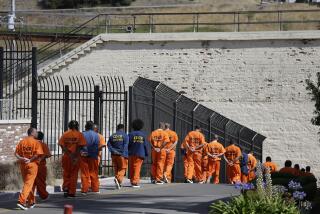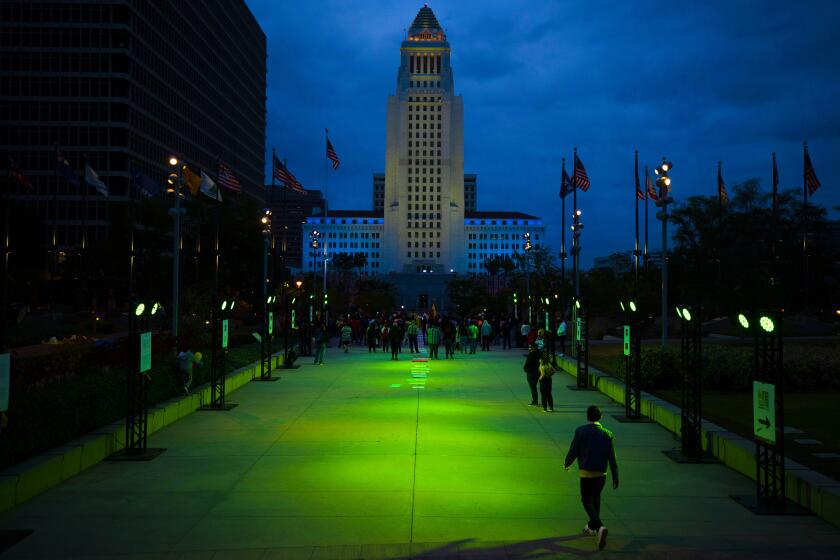Editorial: Police, prosecutors and courts are keeping California’s criminal justice data a secret

A quick flip through the statute books could leave the false impression that California has the nation’s most transparent criminal justice system, the most comprehensively compiled and carefully analyzed crime data, the most penetrating public access — even without a new bill on its way to Gov. Gavin Newsom’s desk.
Since the 1950s, California law has required the state Department of Justice to collect names, numbers and other key facts from every state and local agency dealing in any way with crime, criminals or “juvenile delinquents.” In the 1970s, lawmakers set standards for sorting and sharing justice data among courts, police, prosecutors, jails and prisons. In 2016, a new law required the state attorney general to post basic criminal statistics online. And for decades, California has acknowledged the public’s right to inspect arrest records and other essential documents.
Yet retrieving useful information about California’s justice system is nearly impossible. More than half of all arrest records fail to show whether the suspect ultimately was convicted, so police can’t tell whether the person they just stopped has a serious felony record. Innocent people might sit in jail while courts or probation departments try to track down complete rap sheets that really ought to be available with a couple keystrokes. Violent felons may be left free to buy guns despite being legally barred from doing so. Potential employers can’t tell the difference between a job applicant with a criminal past and one who was once mistakenly arrested.
Meanwhile, inadequate numbers and other data leave the public with no idea whether criminal justice reforms or other new laws are working as they were intended, or whether their courts, cops, prosecutors, probation departments and public defenders are working efficiently and effectively.
How can a state that requires so much information-gathering be so in the dark about its justice system?
In part, it comes down to lack of resources and lack of technological know-how. Some courts and county agencies (barely) meet their legal requirements by sending paper records to the Justice Department, which then must transcribe the documents into its own data system. Other agencies have some tech savvy but use systems or software that are incompatible with one another or are no longer supported by the companies that developed them. And standards for collecting data vary around the state, so all that carefully compiled information has limited utility.
Still — other states that face similar challenges manage to do better.
One problem that sets California apart is scale. The state is huge, and so are the numbers of arrests, dismissals, convictions, sentences, probation orders. It takes money and expertise to manage all those records.
But it may also be that criminal justice agencies have little enthusiasm for opening their operations to public scrutiny. For example, until recently the California Department of Corrections and Rehabilitation prohibited researchers from publishing findings that officials believed might reflect poorly on the department, according to an April 2019 report by the Stanford Criminal Justice Center and Measures for Justice (an organization seeking to improve justice data collection practices).
The same may be true of other agencies. A district attorney, for example, has a political incentive to jealously guard data about conviction rates, reversals on appeal and the like. Judges are wary of being graded on how swiftly cases move through their courts or how many African American defendants, for example, are convicted in their courtrooms, and how long their sentences are compared with convictions and sentences for white defendants.
Assembly Bill 1331, whose fate now rests with Newsom, would close some of the current gaps in criminal history records by tightening reporting requirements for law enforcement agencies and courts. It would require release of anonymized information to research agencies, which would then be able to sift through data to discover trends or biases. It would promote better and faster sharing of information among public agencies.
It’s a step forward, and it deserves Newsom’s signature. But like all those older laws on California’s books, it won’t solve the state’s criminal justice information problem without serious buy-in by courts, police and other participants in the system. They will have to more fully embrace — on their own or through public and political pressure — their role in producing useful data.
More to Read
A cure for the common opinion
Get thought-provoking perspectives with our weekly newsletter.
You may occasionally receive promotional content from the Los Angeles Times.






